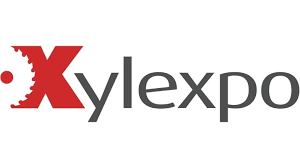In Mexico, spending by companies on capital goods and infrastructure grew 4.6% at an annual rate in January, above analysts' forecasts, which could be stimulated in February and March due to the lower cost of imported machinery as a result of a strong exchange rate.
Alejandro Cervantes, an analyst at Banorte-Ixe, stated that " investment in machinery and equipment will most likely present a better performance during the first quarter of the year due to the significant appreciation that has been observed in the Mexican currency".
He recalled that imports of capital goods are very sensitive to exchange rate fluctuations, so we could see a better performance in the growth of imported machinery and equipment.
Likewise, given that investment in domestic machinery and equipment is a complement to capital goods acquired internationally, it is likely that domestic capital spending will also present a better performance during the first quarter of the year.
Eduardo González, a specialist at Banamex, said that "the advance of investment in machinery and equipment could continue during the year, given the current high levels of utilization of productive capacity, we expect this investment to grow around 10% during the year, while total investment is expected to grow around 6%, although it is likely that the latter will continue to show some volatility in its annual growth rate in the short term, due in part to calendar factors".
The economic indicators of the National Institute of Statistics and Geography(INEGI), on the investment of companies in machinery and equipment, revealed that the purchase of national equipment rebounded 12.4% in the first month of the year with respect to the same period of the previous year.
Also today's economic news noted that the purchase of imported goods rebounded 8.1% annually in January, due to a 1.5% appreciation of the peso during the first month of the year.
"We foresee that in February the purchase of imported machinery may decrease due to the 0.5% appreciation of the dollar with respect to the peso, but that it will rebound in March after a 3.5% gain of the Mexican currency, which will lower the cost of this equipment in pesos," stated an analysis of the brokerage firm BX+.
For this firm, spending on domestic goods in particular could show a slight moderation due to the fact that in the first three months of the year, the IMEF Manufacturing new orders index stood at 53.2 points on average, slightly lower than that of 4Q-12 of 53.9, indicating that the sector 's activity has moderated.
Regarding construction spending, it has maintained its downward trend since the end of the previous year and could extend due to the fact that the outlook for housing construction will be moderate in 2013. INEGI reported that construction spending as part of gross fixed investment grew by only 1.2% annually in January.
In this regard, analysts at Banorte-Ixe believe that this will show a contraction during the first quarter of 2013, mainly explained by the reduction in public investment.
Regarding expectations for the second half of 2013, BX+ believes that "foreign investment in infrastructure and capital goods will be an important driver for the economy in the second half of the year".
Source: (Ricardo Vázquez/Mexican Business Web)

























